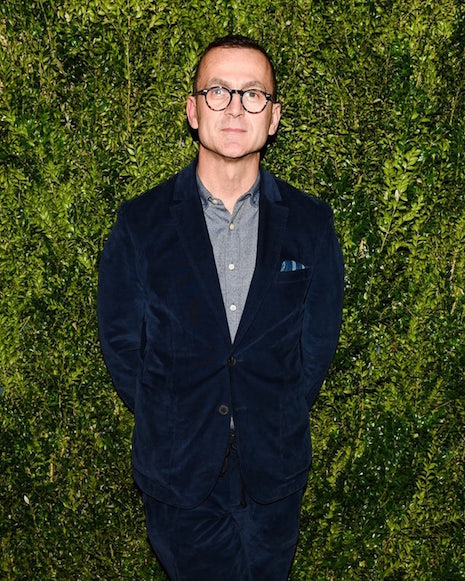 Launchmetrics believes the "influence funnel" is key. Image credit: Alexander Wang
Launchmetrics believes the "influence funnel" is key. Image credit: Alexander Wang
NEW YORK – In the modern age of influencers and always-accessible celebrities working with fashion brands, luxury needs to be able to strike a balance between exclusivity and accessibility.
Data company Launchmetrics and the Council of Fashion Designers of America worked together to create a new report delving into the details of how social media, influencers and digital tools have affected the ways that luxury fashion brands communicate with consumers. At a panel the two companies hosted at Spring Studios in New York on Jan. 25, experts from across the fashion industry weighed in with their thoughts.
"Fashion and luxury are all about exclusivity," said Michael Jais, CEO of Launchmetrics. "If you think about social media, it's all about being accessible.
"How do you remain exclusive and accessible at the same time?" he said.
Striking a balance
The fashion world today is caught between two extremes. On the one hand, luxury is about exclusivity and the more accessible a product is, the less luxurious it seems. It is diluted by being spread too thinly.
At the same time, consumers today are accustomed to having access to content at all times. As the deluge of images and social media posts has trained consumers to expect a constant relationship with a brand, the exclusive nature of luxury can be somewhat of a setback.
Therefore, luxury brands are tasked with making exclusive products accessible, without negating either aspect.
One solution to this paradox, presented by Chris Gay of Elite World, is that the accessibility of influencers and models can give consumers the allusion of exclusivity through getting information about future products.
Chris Gay. Image credit: Elite World
"People talk a lot about exclusivity, and when we look at followers and what young people are looking for, they want information," Mr. Gay said. "Exclusivity sometimes comes from knowing about something first because you’ve seen it on someone you follow.
"Seeing something cool backstage at Alexander Wang is important to that audience," he said. "There is pride in that information, that we saw it first."
Social connections
Launchmetrics has released a report that analyzes the “influence funnel” or the various steps of influencing consumers into buying.
The company lists each step of the influence funnel as awareness, influencers, authority and owned media. At each step, brands have multiple options for how to influence the consumer, including multiple social media platforms.
"Each platform has a really specific deliverable and delivers better on some things than others," said Stephanie Horton of Alexander Wang. "Instagram is obviously the biggest, but even Facebook and Twitter can be helpful."
Steven Kolb. Image credit: CFDA
Another trend in the fashion industry that bridges the gap between exclusivity and accessibility is the see-now, buy-now business model. The panel noted that legacy fashion brands tend not to favor it as their consumer base is used to the idea of seasons and waiting to buy the clothes seen on the runway.
Conversely, newer fashion brands, especially those with active social media presences, can benefit greatly from see-now, buy-now and the unique effect it has on the relationship built between brand and consumer.
"See-now buy-now, as a model, is still followed by a lot of designers," said Steven Kolb, president and CEO of CDFA. "Tommy Hilfiger has been doing it very successfully.
"If you're showing a collection and its not for sale until six months, there's fatigue, the customer is not interested anymore," he said. "But a lot of brands don’t believe that.
"It seems to work best for newer brands rather than legacy brands."


